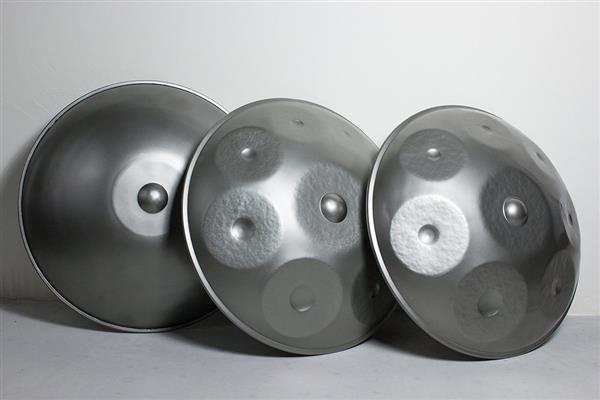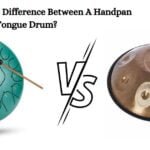No, stainless steel handpans are not just a fad. They have been around for over 20 years and continue to gain popularity due to their unique sound, durability, and ease of maintenance. The future of the handpan looks bright, with new designs and materials being explored to create even more unique sounds.
The History of the Handpan
The handpan was first invented by two Swiss men named Felix Rohner and Sabina Schärer. They were the founders of a company called PANArt Hangbau AG, and they created the first handpan in the year 2000. The original handpan was made out of nitrided steel and was called the Hang. The Hang had a unique sound that was different from any other percussion instrument.

The handpan quickly gained popularity, and people all over the world were fascinated by its unique sound. Today, there are many different variations of the handpan, and each one has its own unique sound.
The Benefits of Using Stainless Steel
Stainless steel is a popular material for making handpans. There are several benefits to using stainless steel, including:
- Durability: Stainless steel is a durable material that can withstand the wear and tear of regular use. Handpans made from stainless steel are less likely to dent or scratch than those made from other materials.
- Sound quality: Stainless steel produces a bright, clear sound that is perfect for the handpan. The sound of the handpan made from stainless steel is crisp and vibrant, making it ideal for playing in a variety of musical genres.
- Maintenance: Handpans made from stainless steel are easy to maintain. They do not require any special cleaning or polishing products, and they can be easily cleaned with a damp cloth.
The Future of the Handpan
The handpan has come a long way since it was first invented in 2000. Today, there are many different variations of the instrument, and it has become popular all over the world.
As technology continues to advance, it is likely that we will see even more variations of the handpan in the future. Some companies are already experimenting with new materials and designs to create even more unique sounds.

Despite its popularity, some people believe that the handpan is just a fad. However, the handpan has been around for over 20 years now, and it shows no signs of slowing down. As more people discover the beauty of this unique instrument, it is likely that it will continue to gain popularity in the years to come.
What is the difference between a steelpan and a handpan?
The main difference between a steelpan and a handpan is their size and shape. Steelpan is a large, concave instrument that is typically played in groups, such as steel drum bands. Handpans, on the other hand, are smaller, more compact instruments that can be played solo or in small groups.

Another difference is in their sound; steelpans have a more percussive sound, while handpans have a more melodic sound. steelpans are typically made from oil drums, while handpans are made from specially crafted steel sheets that are shaped and tuned by hand.
What is the best material for a handpan?
The best material for a handpan depends on the sound that the musician wants to achieve. The most common materials used for making handpans are stainless steel, nitrided steel, and carbon steel.
Stainless steel is popular because it is durable, produces a bright and clear sound, and is easy to maintain. Nitrided steel is also durable and produces a warm and mellow sound. Carbon steel produces a rich and complex sound, but it is less durable than stainless or nitrided steel.
How do you clean a stainless steel handpan?
To clean a stainless steel handpan, simply wipe it down with a soft, damp cloth. Do not use any harsh chemicals or abrasive materials, as they can damage the surface of the handpan. If the handpan has any stubborn stains or marks, you can use a small amount of mild soap or vinegar to remove them. After cleaning, make sure to dry the handpan thoroughly to prevent any water spots from forming.
What metal are handpans made of?
Handpans are typically made of steel, although the specific type of steel can vary. The most common metals used for making handpans are stainless steel, nitrided steel, and carbon steel. Each type of steel has its own unique properties that affect the sound of the handpan. Other materials, such as aluminum and titanium, have also been used to make handpans, but they are less common.
FAQs
What is the difference between a handpan and a steel drum?
While both instruments are made out of steel, they produce different sounds. Steel drums are typically larger and have a more percussive sound, while handpans are smaller and produce a more melodic sound.
Can anyone learn to play the handpan?
Yes, anyone can learn to play the handpan. It takes practice and patience, but with dedication, anyone can master this unique instrument.
Are stainless steel handpans more expensive than other handpans?
It depends on the manufacturer and the specific model. Stainless steel handpans can be more expensive than those made from other materials, but they also tend to be more durable and produce a higher quality sound.
Conclusion
In conclusion, stainless steel handpans are not just a fad. They have been around for over 20 years, and their popularity continues to grow. The history of the handpan shows us that this instrument has come a long way since its invention in 2000, and it has already established itself as a unique and beloved percussion instrument.
Overall, stainless steel handpans are not just a fad, but a valuable and enduring instrument that will continue to captivate audiences for years to come.



[…] of the best ways to amplify the sound of acoustic idiophones and handpans is through the use of microphones. By placing a microphone close to the instrument, you can capture […]
[…] and harmonious musical performance. The Blues Harp can provide a melodic background while the Handpan adds a rhythmic element, making for an interesting and dynamic musical […]
[…] Handpan and the Rav Drum require different playing techniques and produce distinct sounds. The Handpan is […]